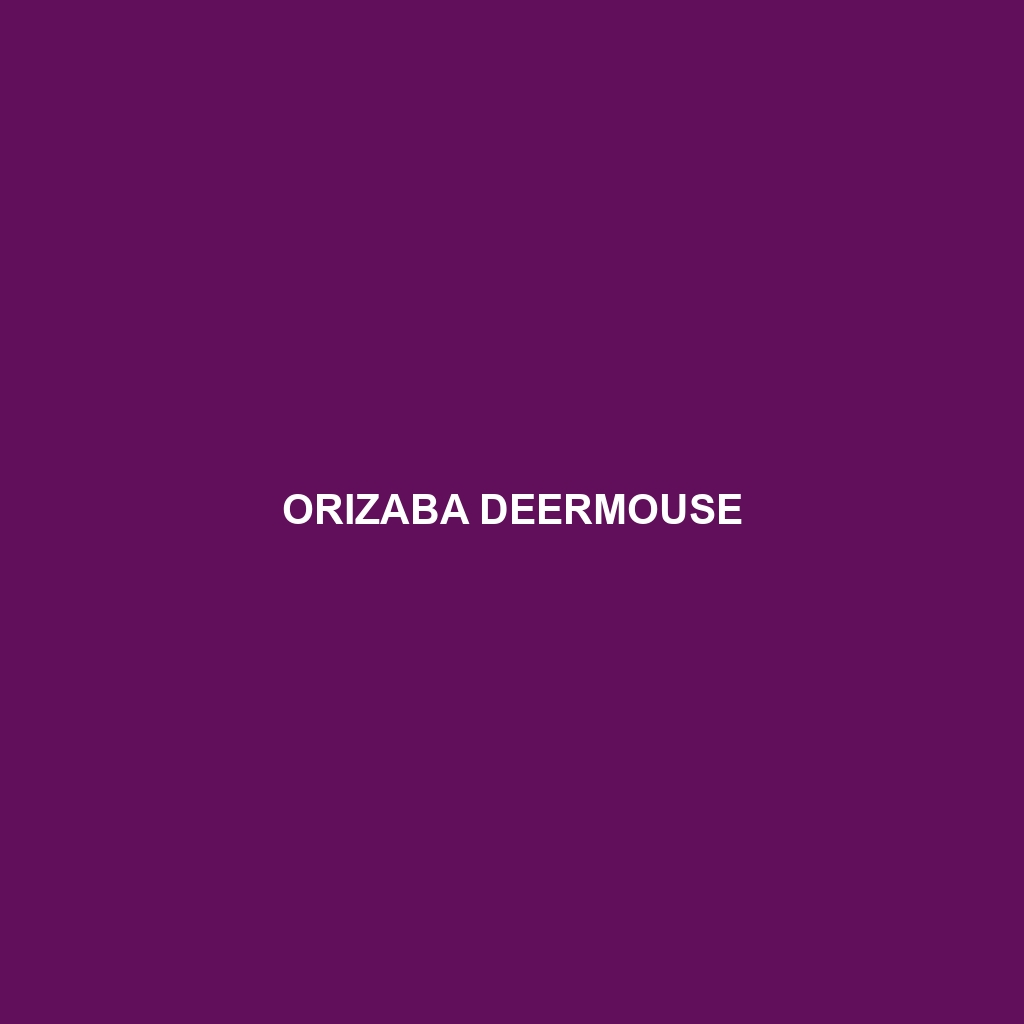Orizaba Deermouse
Common Name: Orizaba Deermouse
Scientific Name: Peromyscus dimorphicus
Habitat
The Orizaba Deermouse is primarily found in the mountainous regions of Eastern Mexico, particularly around the volcanic slopes of the Pico de Orizaba, which is the highest peak in Mexico. This species thrives in temperate forests, oak-pine ecosystems, and montane grasslands, favoring areas with dense undergrowth for cover.
Physical Characteristics
Orizaba Deermice are medium-sized rodents, typically measuring between 16 to 25 cm (6 to 10 inches) in total length, including their long tails which can account for a substantial portion of this measurement. Their fur is predominantly a rich brown or gray with lighter underparts, providing excellent camouflage in their natural habitat. Distinctive features include large eyes, a pointed snout, and tufted ears, making them easily identifiable among other rodent species.
Behavior
These mice are primarily nocturnal, displaying heightened activity at night. They are known for their agility and are adept climbers, often nesting in trees or shrubs. Orizaba Deermice exhibit social behaviors, often living in small family groups. They are skilled foragers, utilizing their keen sense of smell to locate food.
Diet
The diet of the Orizaba Deermouse consists mainly of seeds, fruits, nuts, and small insects. This diverse omnivorous diet allows them to adapt to seasonal changes in food availability. During the warmer months, they are often seen foraging in the underbrush, while in colder seasons, they may store food for later consumption.
Reproduction
Orizaba Deermice typically breed during the warm months, from late spring through early fall. The gestation period lasts approximately 25 days, resulting in litters of 2 to 6 offspring. Mothers are known to exhibit nurturing behaviors, ensuring their young are well cared for until they are old enough to begin foraging independently.
Conservation Status
The Orizaba Deermouse is currently classified as vulnerable due to habitat loss and fragmentation resulting from deforestation and urban development. Ongoing conservation efforts are crucial to protect this unique species and its mountain ecosystem.
Interesting Facts
The Orizaba Deermouse has developed adaptations to thrive in high-altitude environments, including a thicker coat to insulate against cold temperatures. They play a crucial role in seed dispersal, contributing to the health and regeneration of their forest habitats.
Role in Ecosystem
As both prey and seed dispersers, Orizaba Deermice are integral to their ecosystem. They provide a food source for larger predators, such as birds of prey and snakes. Additionally, their foraging behaviors aid in the growth of plant species, promoting biodiversity within their habitat.
